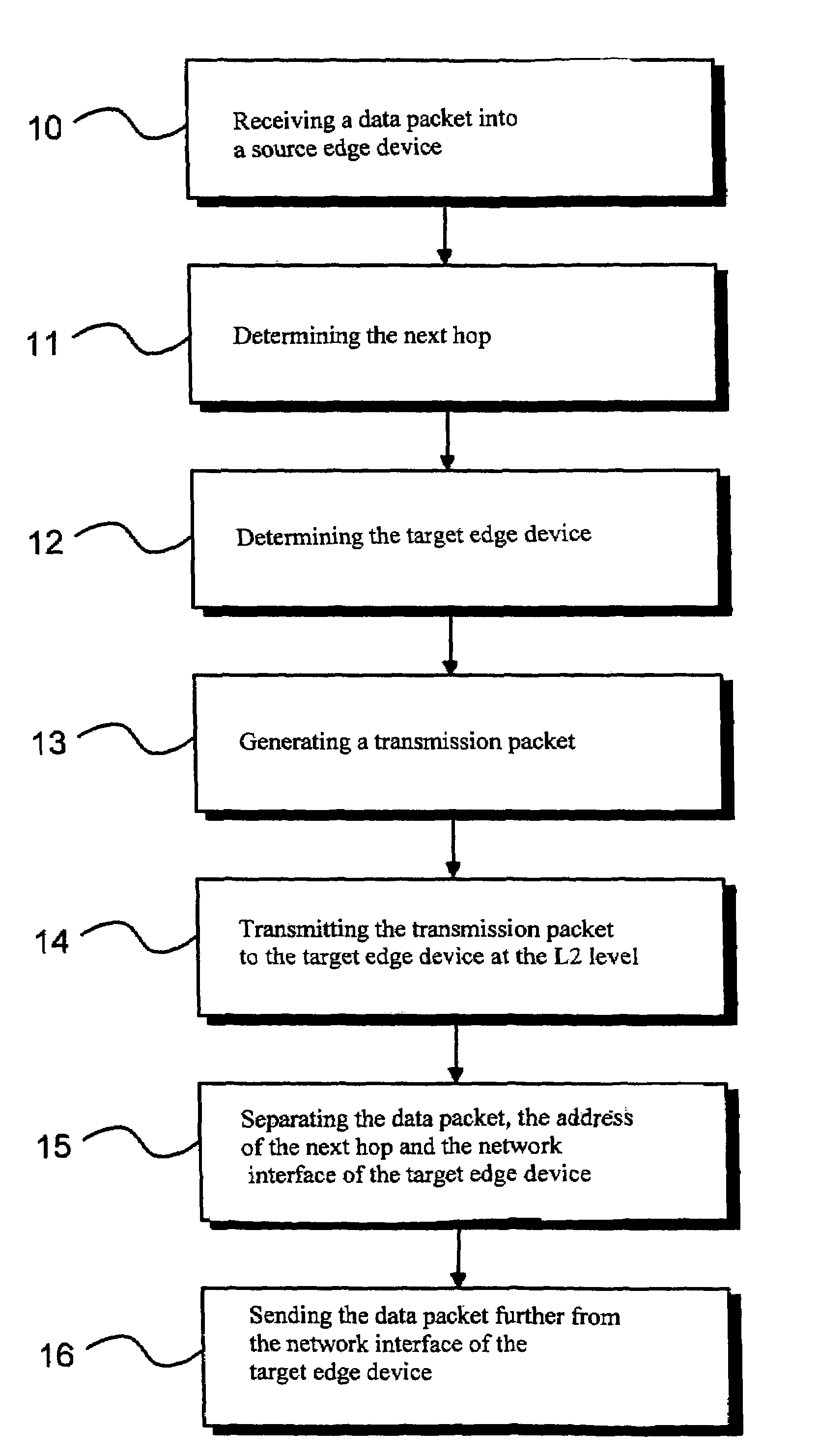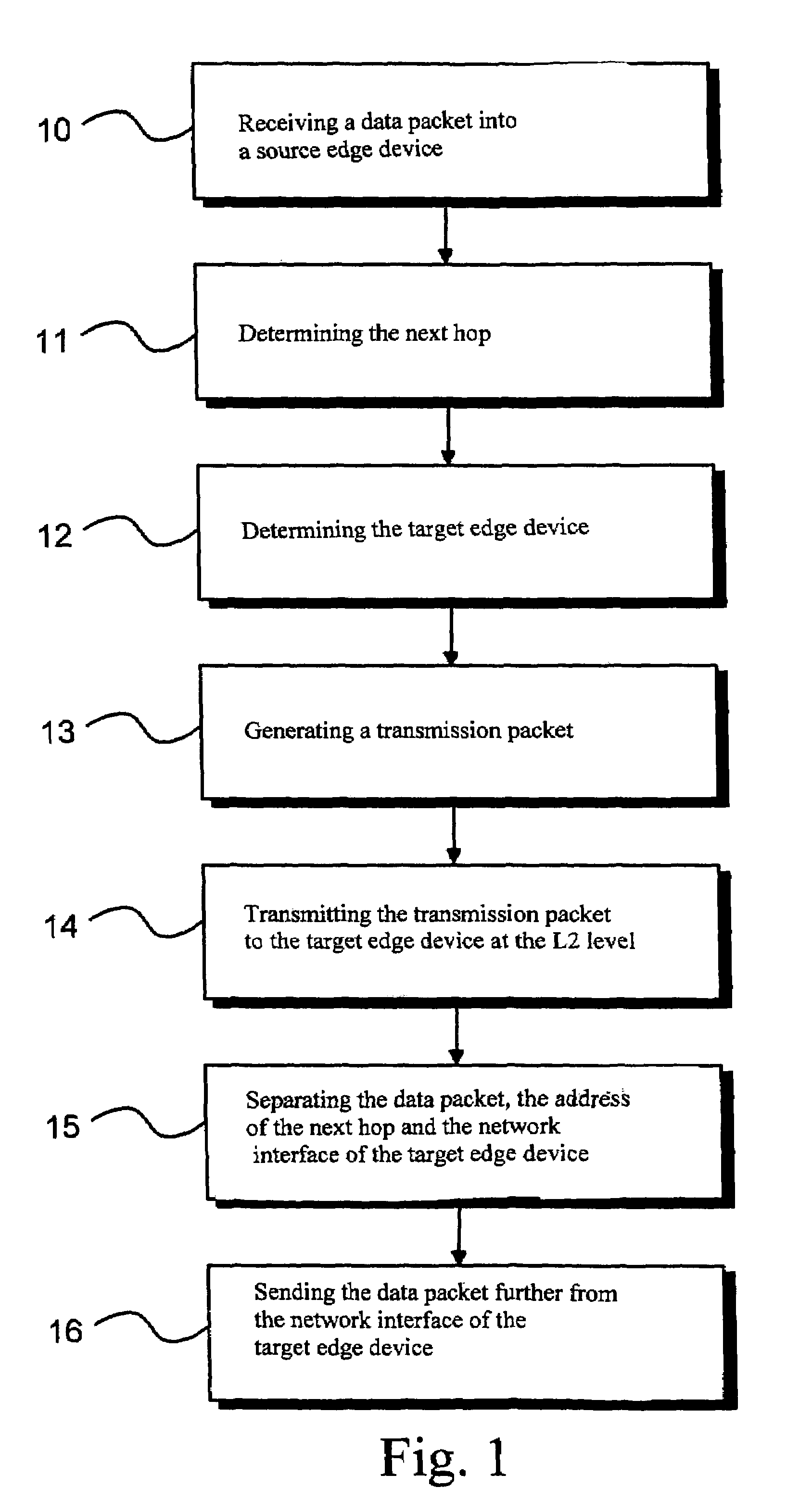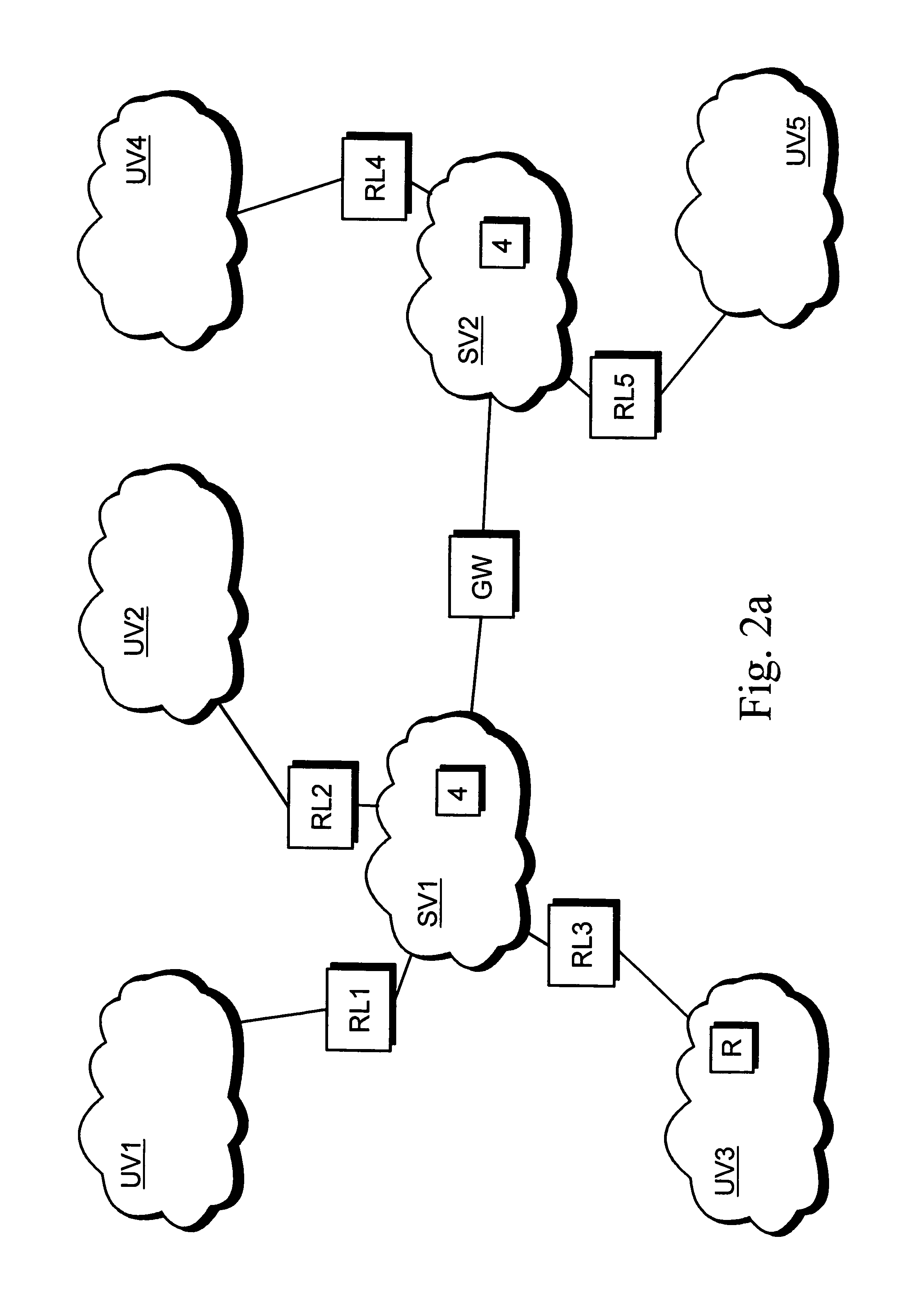Distributed dynamic routing
a dynamic routing and distribution technology, applied in the field of telecommunications, can solve the problems of routers being very complex, and routing being inevitably complicated
- Summary
- Abstract
- Description
- Claims
- Application Information
AI Technical Summary
Benefits of technology
Problems solved by technology
Method used
Image
Examples
Embodiment Construction
[0036]FIG. 1 is a flow chart describing, by way of example, one method of the invention, by means of which method packets are routed in a distributed and dynamic manner via one or more internal packet-switched telecommunication networks.
[0037]In the method shown in FIG. 1 by way of example, a data packet is received from an external packet-switched telecommunication network to a source edge device, step 10. Next, there is determined in the source edge device the next-hop address, corresponding to the destination address prefix of the received data packet, step 11.
[0038]Further, the method as shown in FIG. 1 by way of example determines the address and network interface of the target edge device corresponding to the next hop determined in the source edge device, step 12. Thereafter, at step 13, there is formed in the source edge device a transmission packet addressed to the determined target edge device comprising the received data packet, as well as the determined next-hop address a...
PUM
 Login to View More
Login to View More Abstract
Description
Claims
Application Information
 Login to View More
Login to View More - R&D
- Intellectual Property
- Life Sciences
- Materials
- Tech Scout
- Unparalleled Data Quality
- Higher Quality Content
- 60% Fewer Hallucinations
Browse by: Latest US Patents, China's latest patents, Technical Efficacy Thesaurus, Application Domain, Technology Topic, Popular Technical Reports.
© 2025 PatSnap. All rights reserved.Legal|Privacy policy|Modern Slavery Act Transparency Statement|Sitemap|About US| Contact US: help@patsnap.com



